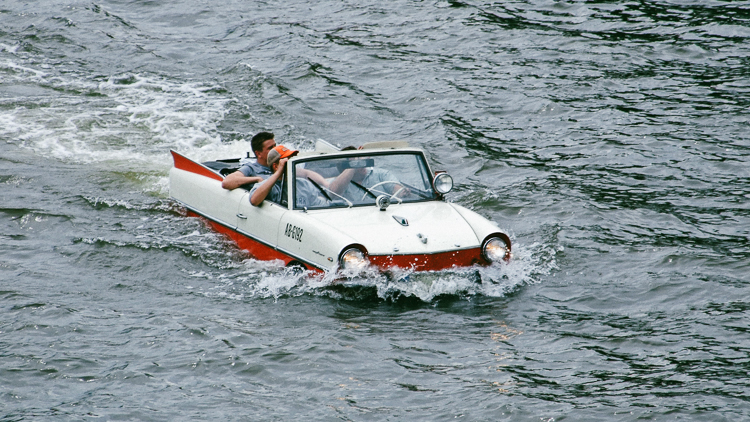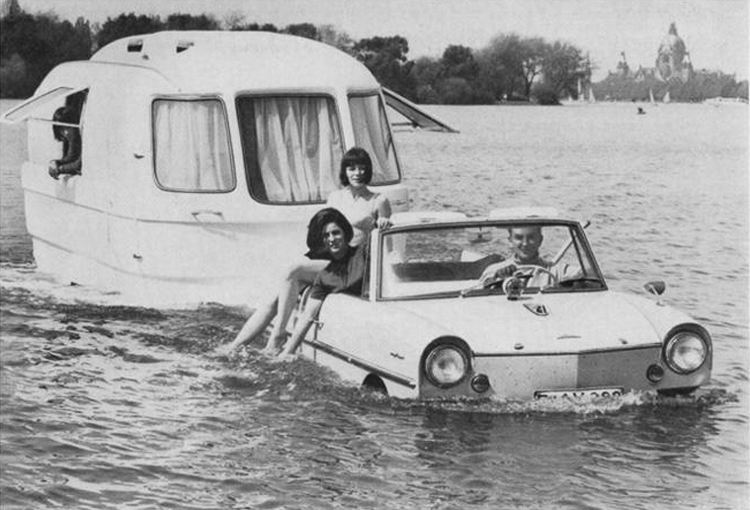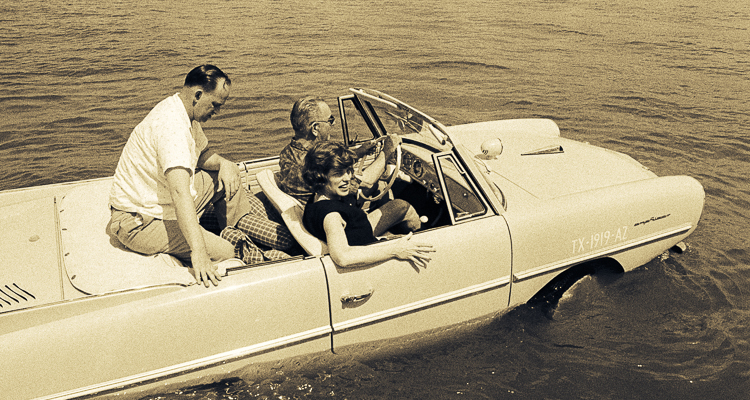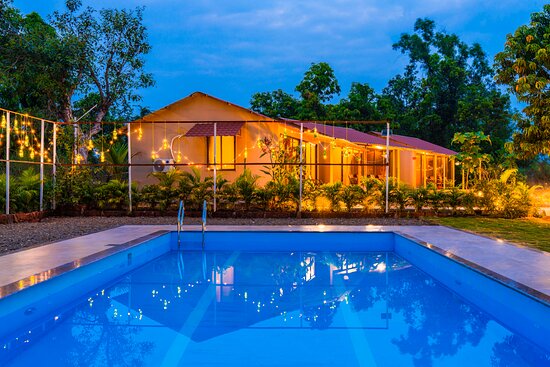BY: JESSICA BEUKER
The Amphicar Model 770 was an amphibious automobile – viable on land, as well as on water – that launched in 1961.
Unfortunately, production only lasted four years, ending in 1965. Other brands of amphibious cars would go on to be produced, but none have been quite as popular as the Amphicar.
The Amphicar was designed by Hanns Trippel, and manufactured in West Germany, where 3,878 were made. The car was a descendant of the Volkswagen Schwimmwagen that was used extensively during the Second World War, although the design is completely different.
The Amphicar had a sleek convertible-style body, with two doors and low wheels. The front and back bumpers were also low, and the vehicle had a one-piece windshield, which was curved. The engine was mounted at the rear, where twin propellers were also found, under the bumper, for propulsion in the water.
The Amphicar’s reputation wasn’t exactly golden though; some argued that it was neither a good car nor a good boat. But on September 16, 1965 four men from England set out to test this theory by taking two Amphicars across the English Channel. They would boat from Dover to Calais, and then drive 375 miles to the Frankfurt Auto Show. They endured 20-foot waves and gale force winds, along with a blocked bilge pump that resulted in one Ampicar being pulled by the other with a nylon rope. They arrived at the auto show the next day.
During the 1960s, another new innovation was born – the Suleica F430 SwimmCaravan. A variation of the original Suleica model – a lightweight and practical caravan camper – the F430 was built to be amphibious and could be pulled across lakes using the Amphicar.
PHOTO VIA: wewastetime
A 1967 magazine ad depicting the Amphicar and the fully equipped mobile home Suleica F430, shows what camping would have been like half a century ago, and what it could have been like today if only the models had been developed and improved upon, instead of left behind as a fond memory.






